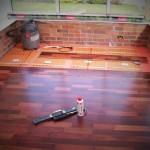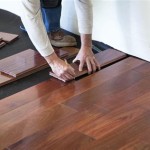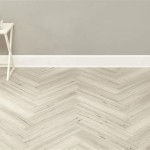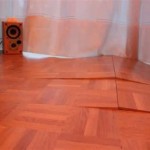Engineered hardwood flooring is often seen as a more durable, cost-effective and attractive alternative to solid hardwood, as it’s made from layers of wood pressed together and then topped with a thin layer of hardwood veneer. But, just like with any flooring, you will have to refinish it from time to time to keep it looking its best. Refinishing engineered hardwood flooring can be a bit tricky, however, so it’s important to understand the basics of the process before you begin.
Step 1: Prepare the Room
Before you start refinishing your engineered hardwood floor, you’ll need to prepare the room. This means removing all furniture and any rugs or mats, as well as vacuuming and mopping the floor to remove any dirt or debris. You’ll also need to seal the edges of the room to prevent the dust and debris from spreading.
Step 2: Sand the Floor
Once the room is properly prepared, you’ll need to sand the floor. Sanding removes the old finish, as well as any scratches or imperfections in the wood. It’s important to use the right type of sandpaper for your floor, as some types of sandpaper may damage the veneer. You’ll also need to sand the floor in the direction of the wood grain to avoid damaging the floor.
Step 3: Vacuum and Wipe the Floor
Once you’re finished sanding, use a vacuum to remove the dust and particles from the floor. Then, use a damp cloth to wipe away any remaining dust. This will help ensure that the new finish will adhere properly to the floor.
Step 4: Apply the Finish
The next step is to apply the finish. This will give the floor its shine and protect it from wear and tear. The type of finish you choose will depend on your preference and the look you’re trying to achieve, but some of the most popular finishes for engineered hardwood floors include oil-based polyurethane, water-based polyurethane, and wax.
Step 5: Let the Finish Dry
Once the finish is applied, let it dry for at least 24 hours before you walk on the floor or move any furniture back into the room. This will ensure that the finish has had ample time to cure, giving it the best chance of lasting for years.
Step 6: Maintain the Floor
Once your floor is refinished, it’s important to maintain it properly. This includes vacuuming and mopping the floor regularly, as well as using mats and rugs to prevent scratches and wear. Additionally, you should avoid using abrasive cleaners or harsh chemicals, as these can damage the finish.
Conclusion
Refinishing your engineered hardwood floor can be a bit of a challenging task, but with the right tools and knowledge, it can be done. Following the steps outlined above will help ensure that your floor looks its best and lasts for years to come.















Related Posts








